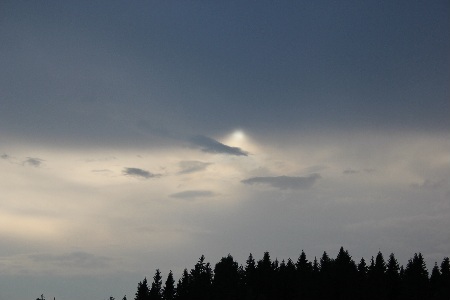New research special - cloud papers 2010-2011
Posted on 10 July 2012 by Ari Jokimäki
New research from last week series started in Skeptical Science at the beginning of 2012. Before this the series had been running for a year and a half in AGW Observer blog. Now, as new research series is having a summer break, we take a peek back to 2010 and 2011 papers in the series. We have four different posts that all contain all the papers included in the new research series during 2010 and 2011 on certain subject.
Subject of the week is clouds. Clouds are one of the biggest sources of uncertainty in future climate projections and are hence very important issue. Below you find all cloud papers that were included in the new research series during 2010 and 2011.

Cloud observations
Variations in cloud cover and cloud types over the ocean from surface observations, 1954–2008 - Eastman et al. (2011)
A high-quality monthly total cloud amount dataset for Australia - Jovanovic et al. (2010)
Cloud features detected by MODIS but not by CloudSat and CALIOP - Chan & Comiso (2011)
Consistency of global satellite-derived aerosol and cloud data sets with recent brightening observations - Cermak et al. (2010)
Changes in extratropical storm track cloudiness 1983–2008: observational support for a poleward shift - Bender et al. (2011)
Cloud feedbacks
The role of low clouds in determining climate sensitivity in response to a doubling of CO2 as obtained from 16 mixed-layer models - Wetherald (2011)
The vertical distribution of cloud feedback in coupled ocean-atmosphere models - Soden & Vecchi (2011)
Computing and Partitioning Cloud Feedbacks using Cloud Property Histograms. Part II: Attribution to Changes in Cloud Amount, Altitude, and Optical Depth - Zelinka et al. (2011)
The roles of aerosol, water vapor and cloud in future global dimming/brightening - Haywood et al. (2011)
An Estimate of Low Cloud Feedbacks from Variations of Cloud Radiative and Physical Properties with Sea Surface Temperature on Interannual Time Scales - Eitzen et al. (2010)
The observed sensitivity of high clouds to mean surface temperature anomalies in the Tropics - Zelinka & Hartmann (2011)
Influence of Arctic sea ice extent on polar cloud fraction and vertical structure and implications for regional climate - Palm et al. (2010)
Projected regime shift in Arctic cloud and water vapor feedbacks - Chen et al. (2011)
Cloud response to summer temperatures in Fennoscandia over the last thousand years - Gagen et al. (2011)
Cosmic rays and clouds
Cosmic rays linked to rapid mid-latitude cloud changes - Laken et al. (2010)
Forbush decreases, solar irradiance variations, and anomalous cloud changes - Laken et al. (2011)
Do cosmic-ray-driven electron-induced reactions impact stratospheric ozone depletion and global climate change? - Grooss & Muller (2011)
Cosmic ray effects on cloud cover and their relevance to climate change - Erlykin et al. (2011)
Solar irradiance, cosmic rays and cloudiness over daily timescales - Laken & ?alogovi? (2011)
Relationship of Lower Troposphere Cloud Cover and Cosmic Rays: An Updated Perspective - Agee et al. (2011)
The contribution of cosmic rays to global warming - Sloan & Wolfendale (2011)
Other issues
Do anthropogenic aerosols enhance or suppress the surface cloud forcing in the Arctic? - Alterskjær et al. (2010)
Long-Term Trends in Downwelling Spectral Infrared Radiance over the U.S. Southern Great Plains - Gero & Turner (2011)
Atmospheric and surface contributions to planetary albedo - Donohoe & Battisti (2011)
Clouds and the Faint Young Sun Paradox - Goldblatt & Zahnle (2011)
Microphysical and macrophysical responses of marine stratocumulus polluted by underlying ships: Evidence of cloud deepening - Christensen & Stephens (2011)
Global analysis of cloud field coverage and radiative properties, using morphological methods and MODIS observations - Bar-Or et al. (2011)
Cloud effect of persistent stratus nebulosus at the Payerne BSRN site - Wacker et al. (2011)
Atmospheric cloud water contains a diverse bacterial community - Kourtev et al. (2011)
The aerosol–Bénard cell effect on marine stratocumulus clouds and its contribution to glacial-interglacial cycles - Bar-Or et al. (2011)
Influence of the extent and genera of cloud cover on solar radiation intensity - Matuszko (2011)
Cloud variations and the Earth's energy budget - Dessler (2011)
Combining satellite data and models to estimate cloud radiative effect at the surface and in the atmosphere - Allan (2011)
Reproducibility by climate models of cloud radiative forcing associated with tropical convection - Ichikawa et al. (2011)
World War II contrails: a case study of aviation-induced cloudiness - Ryan et al. (2011)
































 Arguments
Arguments























 0
0  0
0






Comments